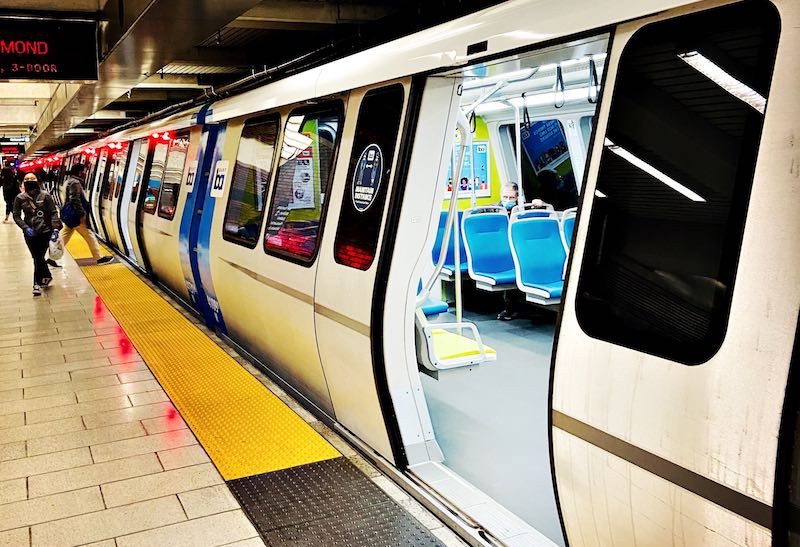 (Photo: Luke Thomas)
(Photo: Luke Thomas)
Public transportation is in serious trouble in the face of COVID-19. Mass transit systems are reporting much lower ridership than pre-pandemic levels. According to the American Public Transportation Association, ridership was 62 percent lower in the third quarter of 2020 than the same period in 2019.
As a student, I rely heavily on BART, the San Francisco Bay Area’s regional transit system, to get around. So I wanted to know: How are trains, buses and the agencies that run them getting through this tough time?
I spoke with Bob Powers, the General Manager of BART. We talked about the safety guidelines for BART and how it has been affected financially by the pandemic.
This interview has been edited for clarity and length.
Luke Thomas: How has BART been financially impacted by the coronavirus?
Bob Powers: We’ve been hit very hard in our financial side. We rely pretty heavily on revenue from our riders. With help from our federal delegation in Washington D.C. and the money coming in from the CARES [Coronavirus Aid, Relief, and Economic Security] Act, we’re going to be okay through this fiscal year.
But we certainly have challenges going into the next fiscal year. So I guess the short answer to this would be you know, we’re going to be okay. But it is going to have long-term impacts. And it’s not just one or two years — it’s a 10-year problem.
LT: Can you talk about exactly what BART is doing to keep everybody safe?
BP: We were probably the industry leader, pulling together a set of steps we call the “15 Step Plan” that [make sure] BART is as safe as it can be. Every single train in our fleet is fogged every single night. Our people are in these foggers; they’re spraying every single car. That’s number one.
Two, [trains and other high-touch areas] get wiped down throughout the day. We have personal hand straps, so you don’t have to touch anything. And masks are required in the BART [trains and stations]. We have extra face masks to hand out.
Three, there’ll be public announcements — digital announcements, if you’re down in the San Francisco stations, on the video screens. A lot of other agencies have actually modeled their plan after our plan.
LT: What is being done to protect frontline workers?
BP: Every frontline person has been issued a set of masks. All of our station agents have got PPE [personal protective equipment]. At every station in the system, we have disinfectant. So you can wash your hands, and we’ve made announcements to the riders. We also have a rapid response team —for whoever tests positive — they go around and contact everyone who [that person] has been in contact with. It’s a very successful program.
LT: Have there been any employees who have contracted COVID?
BP: Our essential personnel are getting other essential workers to their jobs, whether it’s at a hospital, or grocery store, or the water department. We have had folks contract COVID, and they’ve gone in and gotten treatment. We’re not immune to that at all, and our hearts go out to anybody that’s contracted COVID.
LT: What specific COVID-related training have your employees received?
BP: A lot of the frontline employees were certainly told which face masks to use, how to wipe down and how to go about fogging every train every single night. Other pieces of training are just common sense. If you’re sick, don’t come into work.
LT: What advice would you give to riders who think it’s not safe to take BART?
BP: I would say first, BART is safe. BART is doing everything we can to make our transit system the safest that it possibly can. From fogging the trains every night, to everybody wearing face masks, to public notifications and education campaigns. When the economy reopens and vaccines start trickling in, they can feel comfortable and confident that BART is there for them.
Wondering what other cities’ transit systems are doing to protect riders? Here are some guidelines: New York, Boston, Chicago, as well as this CDC guide.
As of February 2, 2021, masks are required on all forms of U.S. public transportation, including but not limited to trains and buses and inside stations.